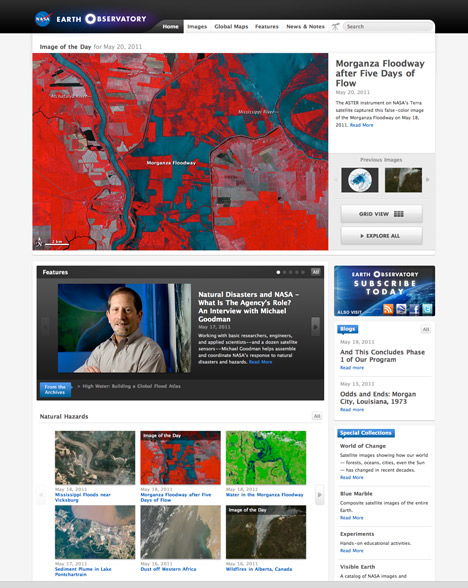

A time-lapse sequence from the International Space Station taken on September 3, 2011. The station starts above Northern Africa, then passes over the Mediterranean Sea and Turkey, followed by the Black and Caspian Seas, the Great Steppe, and finally Mongolia and Lake Baikal.
For more ISS (and Shuttle, Apollo, etc.) photos, check out The Gateway to Astronaut Photography of Earth.
Sometimes I’ll find a surprise in a satellite image. In this case, kilometer-tall letters that spell out “LUECKE” near Austin, TX (Near the Bastrop Fire):
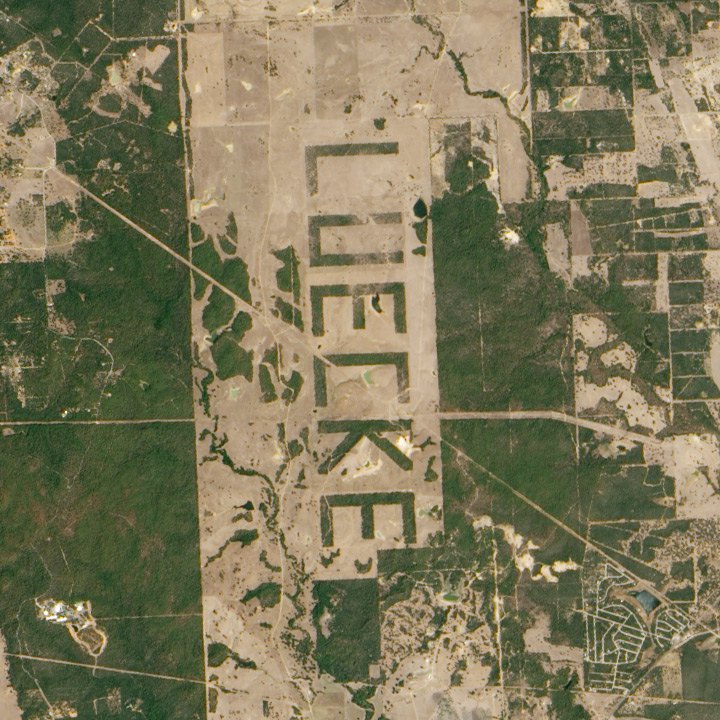
Although this could have just been a curiosity for passing pilots and astronauts, it turns out that Johnson Space Center scientists used the letters to estimate the maximum resolution of cameras aboard the Space Shuttle.
We also made an empirical estimate of spatial resolution for lower contrast vegetation boundaries. By clearing forest so that a pattern would be visible to landing aircraft, a landowner outside Austin, Texas (see also aerial photo in Lisheron 2000), created a target that is also useful for evaluating spatial resolution of astronaut photographs. The forest was selectively cleared in order to spell the landowner’s name ‘LUECKE’ with the remaining trees (figure 10). According to local surveyors who planned the clearing, the plan was to create letters that were 3100 ´ 1700 ft (944.9 ´ 518.2 m). Photographed at a high altitude relative to most Shuttle missions (543 km) with a 250-mm lens, Formula 3 predicts that each pixel would represent an area 28.6 ´ 36.0 m on the ground (table 5). When original film was digitised at 2400 ppi (10.6 mm/pixel), letters correspond to 29.4 ´ 18.8 pixels for a comparable pixel size of 27 – 32 m.
It’s reminiscent of the map of Italy I saw on a hillside near Castellucio, in the Apennines, or even the Nazca Lines. What other examples of landscaping visible from space are out there?
Of all the Earth sciences, geology has the strongest tradition of visual communication. It’s probably because mapping is fundamental to the field, and geologists have 200 years of practice at it. As a result, they tend to create well designed imagery.
Two exemplary techniques geologists use: they almost always include a scale, and they often annotate images directly, rather than relying on separate keys or text descriptions. Here’s an example from Lockwood DeWitt, of Outside the Interzone:
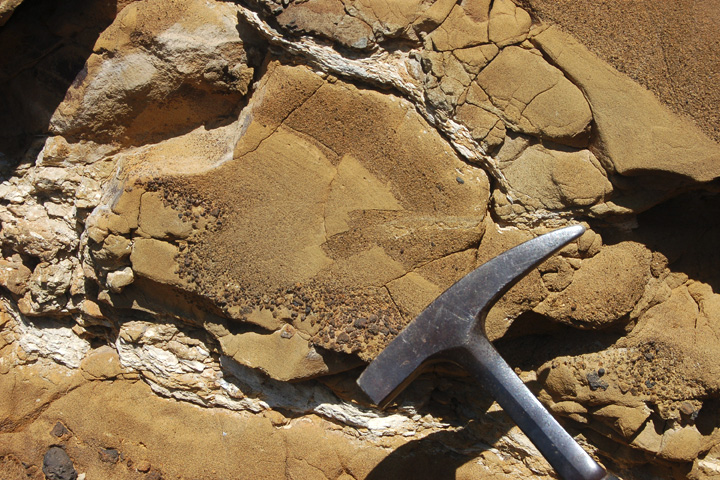
Callan Bentley, author of Mountain Beltway, added annotations that show small faults, and the distribution of grain size in the rock:
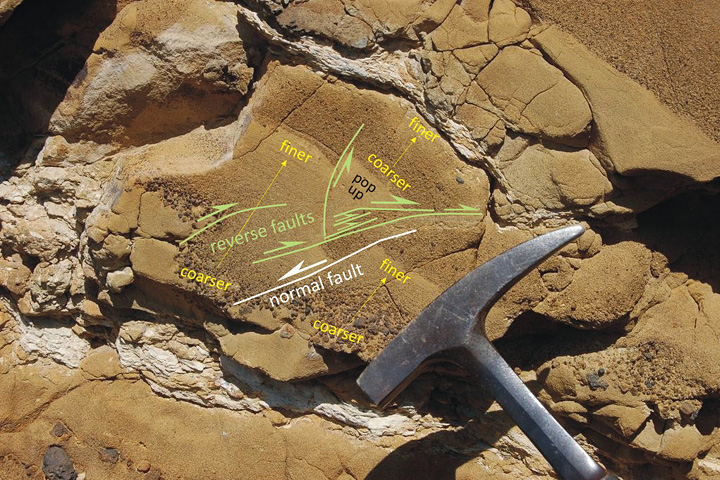
Callan even used different colors to differentiate types of information, and varied the size labels to emphasize the location and type of faulting. Excellent work.
Here’s what Lockwood had to say about Table Rock:
Table Rock is quite similar to the more widely known Fort Rock, but larger and better preserved. It erupted enough material that toward the end, it had raised a cone above the original water-influenced explosive (hydrophreatic) vent. The final phase was a more gentle effusive basalt eruption, which filled in the hollow interior. Without that basalt filling, Table Rock would look very similar indeed to Fort Rock. Here’s the location in FlashEarth, maybe a hundred yards north of the dirt road. The two features both lie in the Fort Rock-Christmas Valley, which were filled by a pluvial lake during the Pleistocene. Even a quick glance over this area reveals quite a few similar water-mediated eruptions. In this view, Hole-in-the-Ground is in the left of the top middle, Fort Rock is in the upper middle, just to left of the four center-pivot irrigation fields, turning the rotated “L” into a backwards “C,” and Table Rock is in the bottom right middle, just above and a bit to the right of the Highway 31 label and tight cluster of irrigated fields.
By the way, I don’t include a scale in every image. Sometimes I just want to let the beauty of a spot be what it is. so I take two pictures. One with, and one without, scale. Here’s an example from a couple days earlier, sans scale. But I have a number of other photos of the same spot (not posted yet) that do provide a sense of scale.
I rest my case.
“… complex datasets require complex visualizations. In general though, simpler is usually the best way to go in the sense that you should make it as easy as possible for a reader to understand what’s going on. You’re the storyteller, so it’s your job to tell them what’s interesting.”
—Nathan Yau, author of Visualize This: The Flowing Data Guide to Design, Visualization, and Statistics and the Flowing Data blog (that I should read more frequently). Found on SmartPlanet.
Every visualization blog on the planet has already posted one or two of these, but they’re awesome, so here is what Washington, DC looks like via Tweets (blue) and photos posted to Flickr (orange). White areas have both tweets and photos.
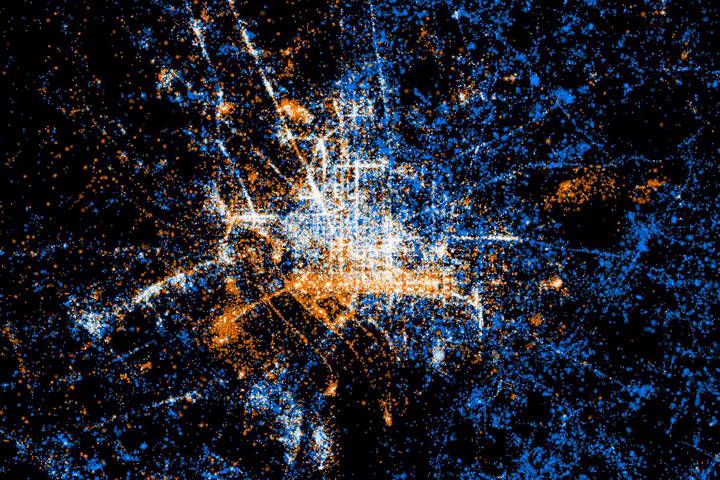
Unsurprisingly, tourist areas are dominated by photos, residential areas by tweets. More here: See something or say something. Visualization by Eric Fischer. H/T to Visual Complexity.
There’s an interesting article in today’s New York Times about mapping historical landscapes: Digital Maps Are Giving Scholars the Historical Lay of the Land.
Few battles in history have been more scrutinized than Gettysburg’s three blood-soaked days in July 1863, the turning point in the Civil War. Still, there were questions that all the diaries, official reports and correspondence couldn’t answer precisely. What, for example, could Gen. Robert E. Lee actually see when he issued a series of fateful orders that turned the tide against the Confederate Army nearly 150 years ago?
Now historians have a new tool that can help. Advanced technology similar to Google Earth, MapQuest and the GPS systems used in millions of cars has made it possible to recreate a vanished landscape. This new generation of digital maps has given rise to an academic field known as spatial humanities.
Along with some nice examples.
Although I got back from the 2011 GRC Visualization in Science and Education conference Friday night, my brain still hurts (in a good way). Thanks to Liz and Ghislain for their superb job as conference chairs. To me, the theme of this year’s conference was salience (more precisely, perceptual salience)–the ability of our visual system to focus on one thing at a time, to the near exclusion of everything else.
Hold one hand out in front of you, with the thumb up, and focus on the thumbnail. This is the limit of your locus of attention: about one degree. Away from that point everything else in your visual field fades into the background. For data visualization this is both an advantage (you can draw people to the important parts of an image) and a drawback (it’s impossible to pay attention to two things at once, and it’s easy to have your focus shifted unintentionally).
I’ll have some examples, and interesting bits from the presentations and discussion, in the next few days and weeks.
Every once in a while we get satellite imagery that shows things that are hard to imagine, like floating rocks. It’s helpful to have a different persepctive, like this series of photographs collected by The Atlantic. Fantastic.
In response to Map of the Ancient Mississippi a few of you left comments to the effect of “no one should live in floodplains.” It’s an appealing notion, but I think it’s unrealistic. Anne Jefferson of Highly Allochthonous published an epic post yesterday outlining the benefits and risks of building in a flood plain, and the need to balance them: Levees and the illusion of flood control. It’s well worth a read. Plus, she dug up some great archival imagery, like this map of the 1927 flood:
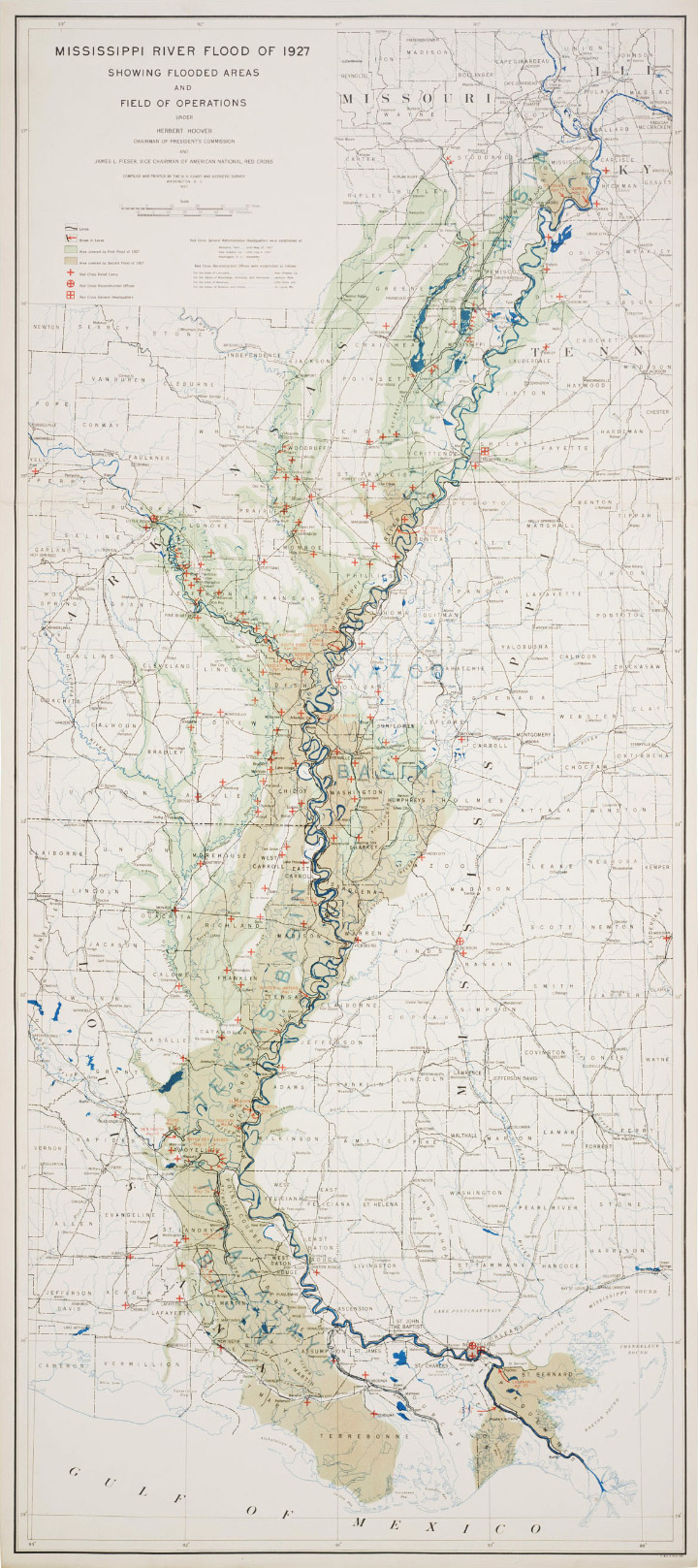
Some additional details on the map are in this article from the National Archives: The 200th Anniversary of the Survey of the Coast.
Here’s a sneak peek at the site-wide redesign we’ll be launching next week. Let us know what you think (not that we can change anything at this point, but we’ll keep any critiques in mind for version 3.1). [Design primarily by Cuban Council, implementation by Paul Przyborski & Kevin Ward.]
